Find the potential differnce VA−VB between points A and B of the circuit shown in.
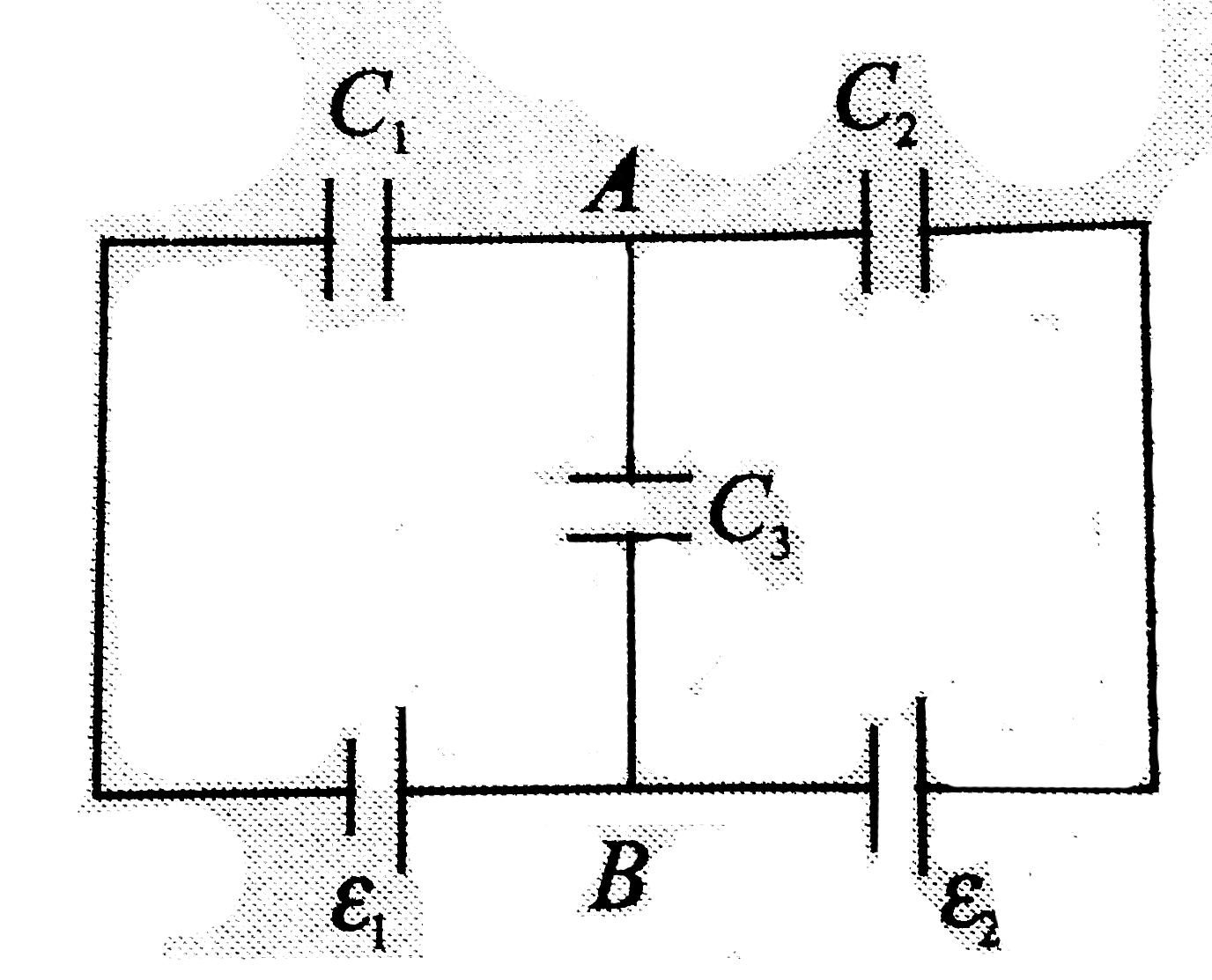 .
.
Method 1: The distribution of electric charge is shown in Fig. 4. 78.
 .
.
In loop (1) ,
ε1−q1C3−qC1=0 (i)
In loop (2),
−(q−q1C1)+q1C3+ε2=0 (ii)
Solving Eqs. (i) and (ii), we get
q1=−C3(C2ε2−C1ε)(C1+C2+C3)
∴VA−VB=−{q1C3}=(C2ε2−C1ε1C1+C2+C3)
Method 2: The algebraic sum of the charge at junction A should be zero . suppose the chartes q1,q2,andq3 are moving away from the junction. Let us assume that potential of unction B is zero . Now we will write the potentials of various junctons as shown in. After knowing the potential difference across the capacitors. we can weite relations of q1,q2 and q3 in terms of their capacitance and potential differece.
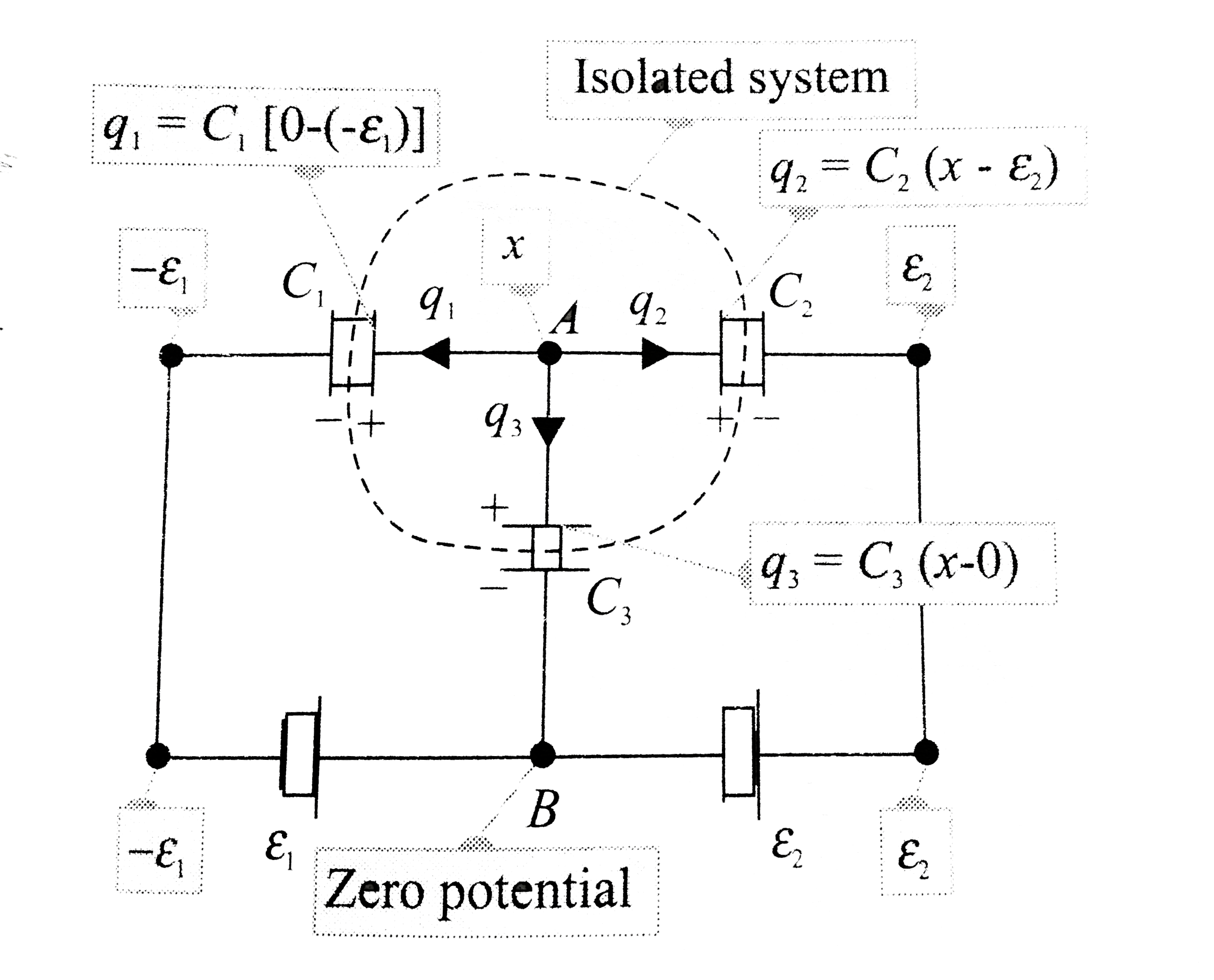
At junction (A),
∑q=0
or q1+q2+q3=0
or C1(x+ε1)+C2(x−ε)+C3(x−0)=0
or x(C1+C2+C3)=ε2C2−ε1C
∴x=ε2C2−ε1C1C1+C2+C3
:.VA+VB=x−0=x=ε2C2−ε1C1C1+C2+C3
Method 3: The electric charge enclosed by the isoated system shown in. should be zero. Therefore,
q1+q2+q3=0
or x+ε1C1+x−ε2C2+x−0C3=0 or x=C2ε2−C1ε1C1+C2+C3
∴VA−VB=x−0=C2ε2−C1ε1C1+C2+C3
Topper's Solved these Questions
- CAPACITOR AND CAPACITANCEBOOK - CENGAGE PHYSICS ENGLISHCHAPTER - CAPACITOR AND CAPACITANCEEXERCISE - Solved Examples
10 Videos
- CAPACITOR AND CAPACITANCEBOOK - CENGAGE PHYSICS ENGLISHCHAPTER - CAPACITOR AND CAPACITANCEEXERCISE - Exercise 4.1
13 Videos
- ATOMIC PHYSICSBOOK - CENGAGE PHYSICS ENGLISHCHAPTER - ATOMIC PHYSICSEXERCISE - ddp.4.3
15 Videos
- CENGAGE PHYSICS DPPBOOK - CENGAGE PHYSICS ENGLISHCHAPTER - CENGAGE PHYSICS DPPEXERCISE - subjective type
51 Videos
Similar Questions
Find the potential difference VA−VB between points A and B of the circuit shown in figure.
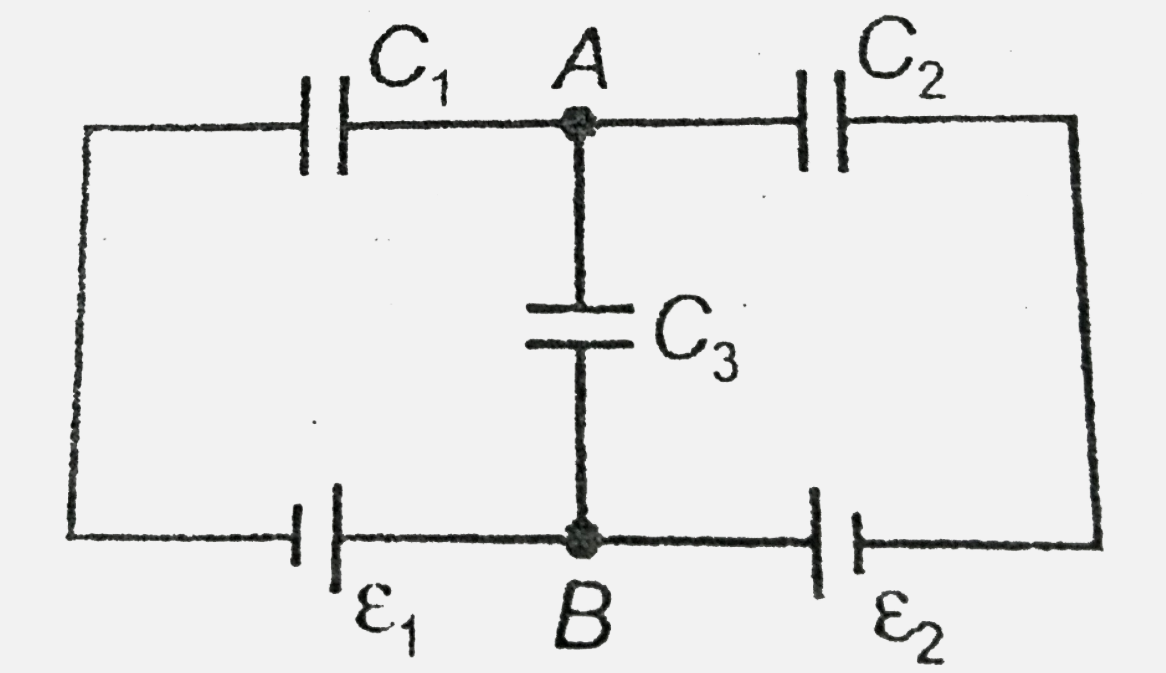
View SolutionDetermine the potential difference VA−VB between point A and B of the circuit shown in figure . Under what condition is it equal to zero ?
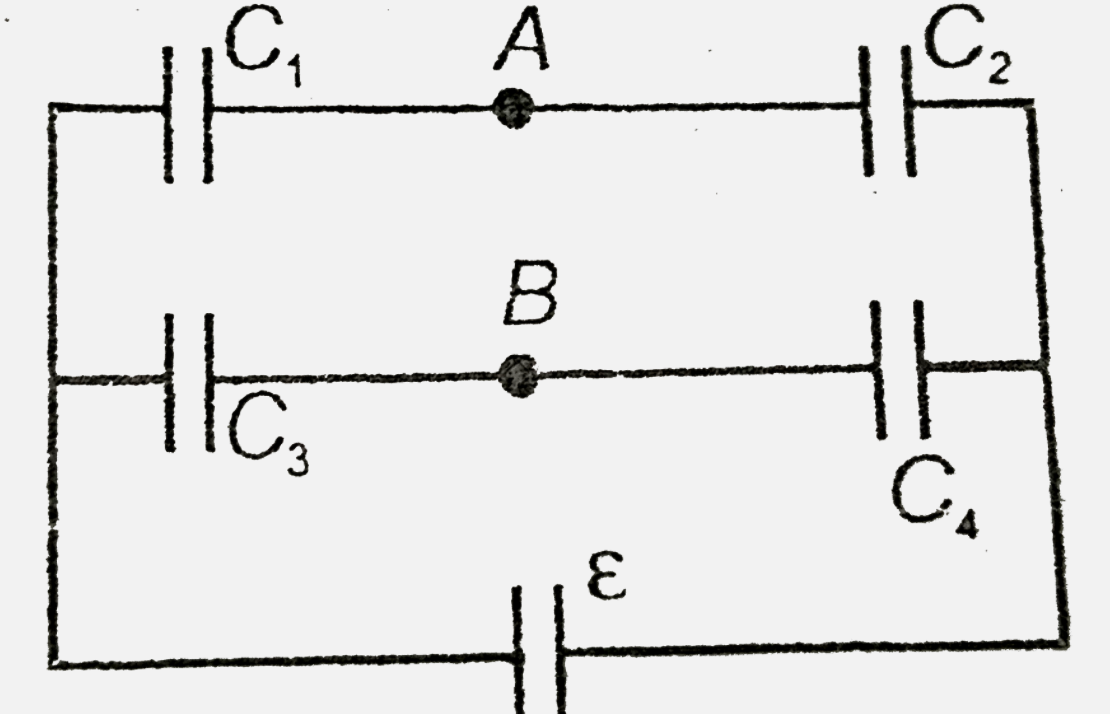
View SolutionFind the potential difference (inV) between points A and B shown in the circuit.
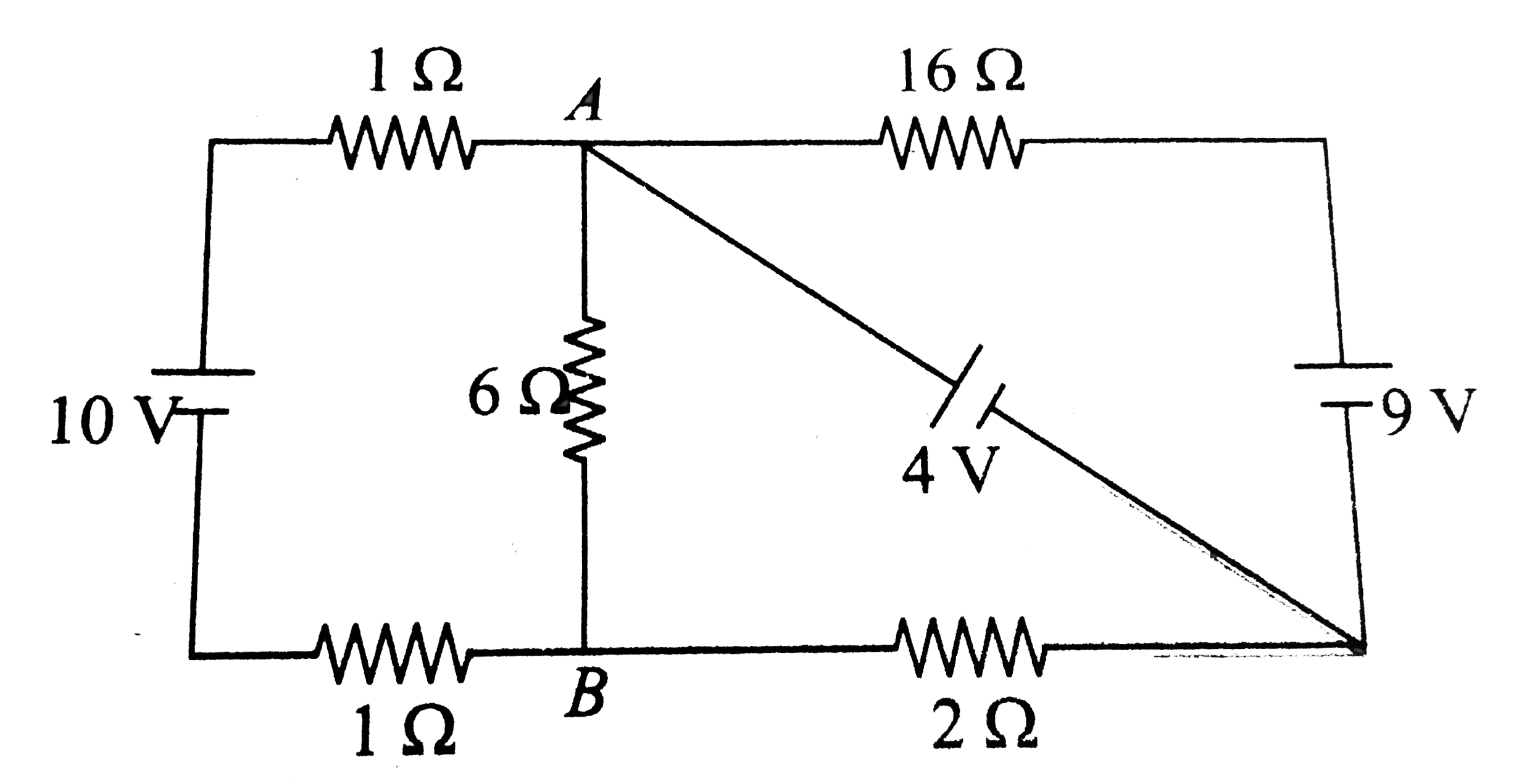
View SolutionThe potential differece VA−VB between points A and B for the circuit segment shown in figure at the given instant is
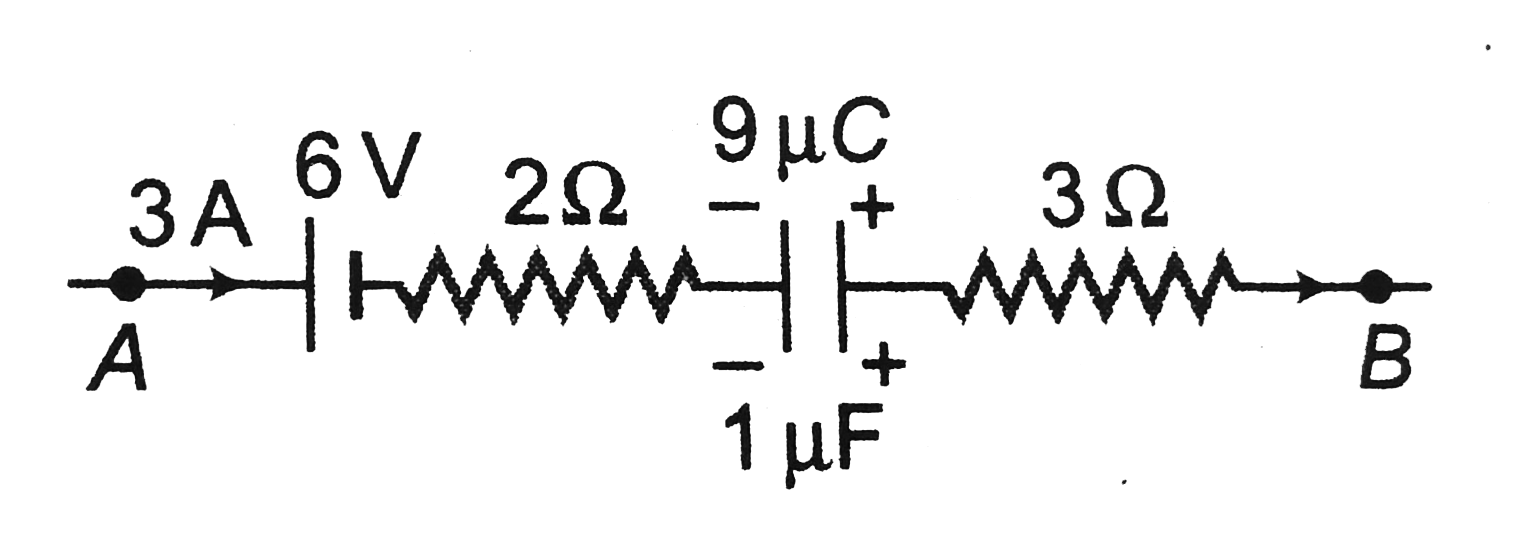
View SolutionThe potential difference between points A and B in the circuit shown in fig. 5.317 is 16V. Then

View SolutionFind the potential difference between the points A and B in the circuit shoun in.
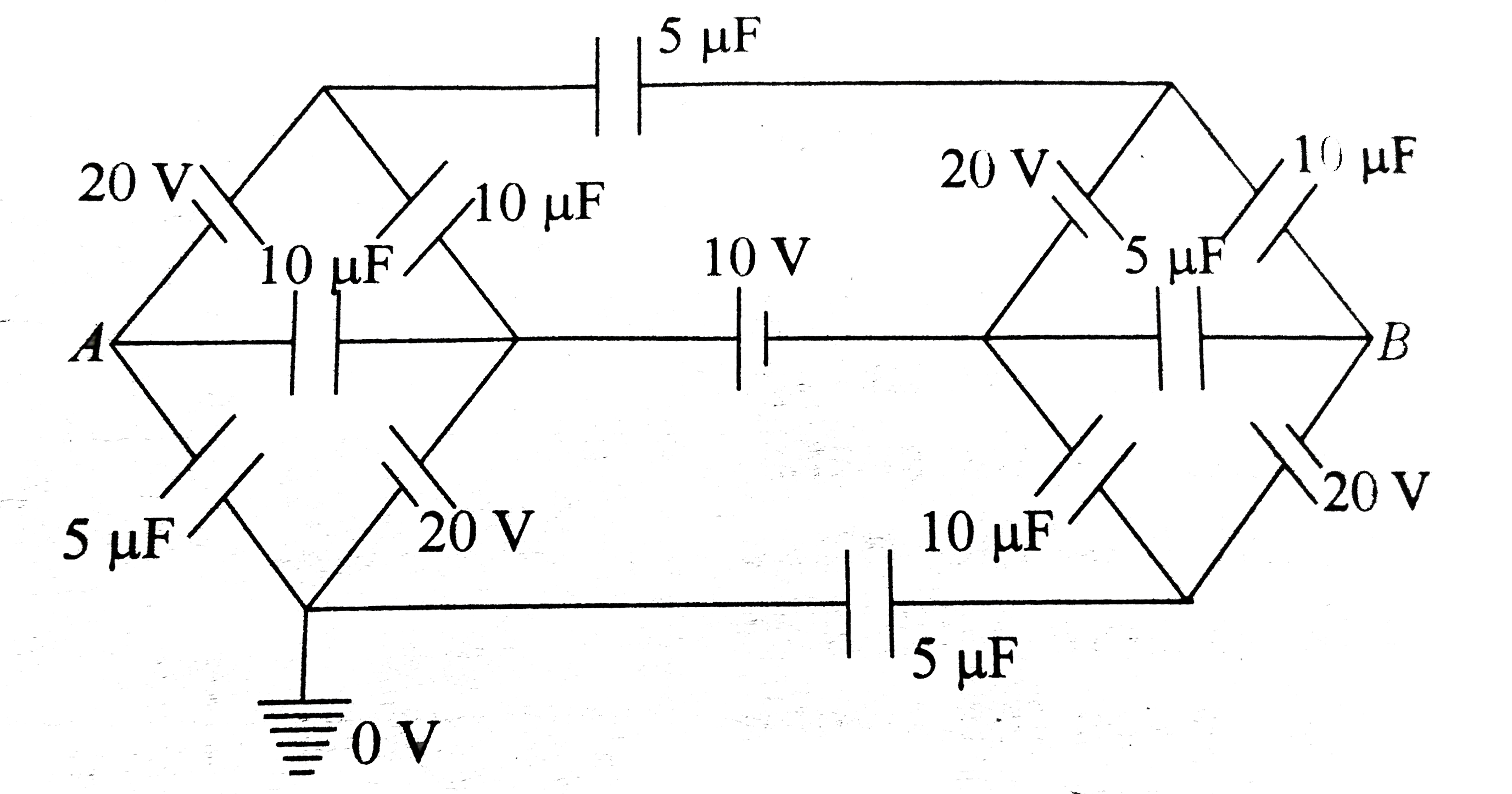 .
.
View SolutionThe potential difference between points A and B, in a section of a circuit shown in

View SolutionThe potential difference (VA−VB) between the point A and B in the given figure is

View SolutionThe potential difference (VA−VB) between the point A and B in the given figure is

View SolutionWhat is the potential difference between points A and B in the circuit shown?
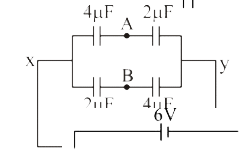
View Solution
